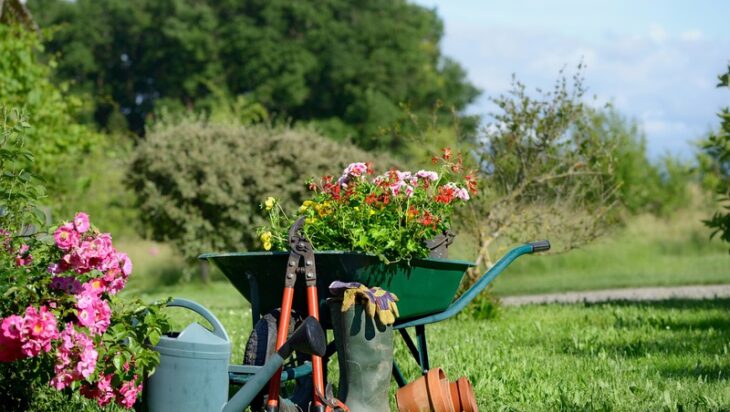Creating a lush and vibrant landscape involves more than just planting flowers and mowing the lawn. It’s both an art and a science, requiring a detailed and personalized approach. Start by assessing your specific needs and preferences, considering factors like climate, soil type, and plant selection. Develop a customized plan that includes regular maintenance like watering, fertilizing, and pruning. Consider sustainability practices, such as composting and using native plants. By carefully planning and implementing these strategies, you can create a beautiful and thriving outdoor space tailored just for you.
Why You Need a Landscape Management Plan
Before you dig into the details of creating a plan, it’s essential to understand why you need one. A tailored plan helps you:
-
Maximize the beauty and health of your landscape
-
Efficiently manage time and resources
-
Ensure sustainability and environmental responsibility
-
Prevent common issues before they arise
Assess Your Landscape’s Needs
The first step in developing your customized landscape management plan is to assess your current landscape. Take a walk around your property and take note of its unique features. Questions to consider include:
-
What types of plants and trees do you have?
-
What are the sun and shade patterns?
-
Are there any drainage issues?
-
What is the soil condition?
Understanding these elements will help you tailor your plan specifically to your landscape’s needs.
Set Realistic Goals
Once you’ve assessed your landscape, it’s time to define your goals. Let your dreams take flight, but keep them grounded in reality. Do you want a space for entertaining, a serene garden retreat, or a children’s play area? Ensure your goals align with the conditions of your property and the resources available to you.
Consider Seasonal Requirements
Landscapes change with the seasons, so your management plan must account for the varying needs throughout the year. Consider what seasonal tasks need to be done, like pruning in the spring or leaf removal in the fall. By planning seasonally, you can ensure your landscape stays vibrant year-round.
Develop a Maintenance Schedule
With your goals in mind, it’s time to create a maintenance schedule. This schedule should balance regular tasks like mowing, watering, and weeding alongside seasonal tasks. Additionally, it should address any specific needs for your plants, such as pest control or fertilization.
Choose the Right Tools and Resources
Having the right tools at your disposal can make a world of difference. Invest in quality tools that suit your landscape’s particular needs. If in doubt, consult with experts who can recommend equipment that will make tasks more efficient and effective. Remember, maintaining a landscape is easier when you’re well-equipped.
Incorporate Sustainable Practices
When developing your landscape management plan, consider incorporating sustainable practices. These might include composting, rainwater harvesting, and selecting drought-resistant plants. Sustainable choices benefit the environment and can also save you money in the long run.
Engage Professional Help When Necessary
Even with a solid plan, there might be times when professional help is needed. For example, if your landscape has complex features or you’re dealing with significant pest issues, a landscape management company in Grand Rapids, MI could offer expert advice and services. Engaging professionals can save you time and ensure high-quality results.
Focus on Tree Care
Trees are valuable assets to any landscape. Ensuring they receive proper care is crucial. Regular inspection for disease, proper pruning, and adequate watering are essential parts of tree care Grand Rapids offers. Healthy trees not only enhance the beauty of your property but also provide shade and improve air quality.
Be Flexible and Adaptable
As your landscape evolves, it may require different care and management based on various elements such as plant growth, seasonal weather changes, and shifts in your own tastes or lifestyle needs. Staying open to modifying your approach is crucial. Regularly reassessing your landscape plan allows you to make timely adjustments, ensuring that it continues to thrive and meet your aesthetic desires. Monitoring these factors and being proactive will keep your landscape flourishing and visually appealing, allowing it to adapt seamlessly to changing conditions and maintain its beauty over time.
Leverage Community Resources
Don’t overlook the power of community resources. Local gardening clubs, workshops, and online forums can provide invaluable insights and tips. Understanding the local climate and vegetation can further enhance the effectiveness of your Grand Rapids landscape maintenance efforts. Connecting with others who share your interests can bring new ideas and solutions to your landscape management challenges.
Final Thoughts
Your customized landscape management plan is complete and ready to enhance your outdoor area. This plan is not just about improving appearances; it focuses on establishing a sustainable, enjoyable, and healthy environment. By implementing this plan, you’ll add significant value to your property and quality of life. Remember, effective landscape management involves thoughtful planning and maintenance to ensure a thriving outdoor space. By taking these steps, you can enjoy a beautiful, functional environment that supports local wildlife, conserves resources, and provides a peaceful retreat for relaxation and gatherings with family and friends.




